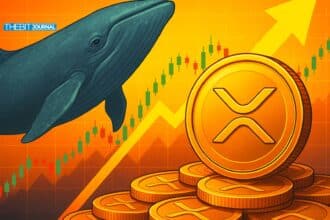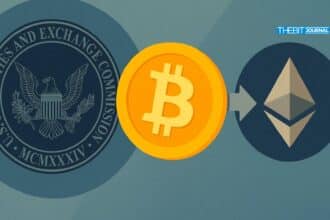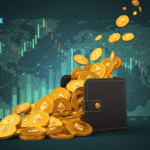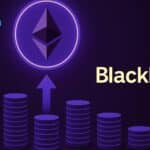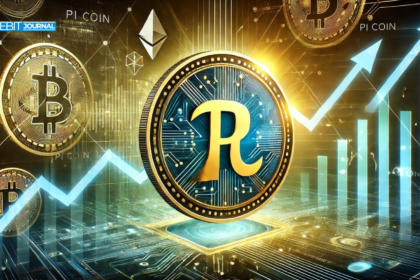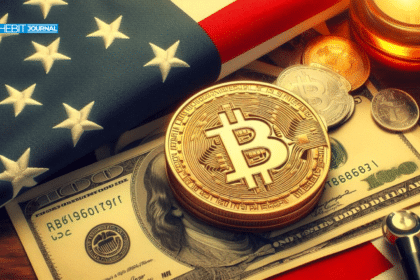XRP is roaring back into the spotlight as a series of futures ETF approvals and a decisive legal victory against the SEC breathe fresh life into Ripple’s native token. With institutional inflows heating up, analysts are beginning to float a bold question: Could XRP be on the road to $10?
ETF Approval Triggers XRP Bullish Frenzy
Ripple’s long-standing battle with U.S. regulators may have finally turned a corner. The U.S. Securities and Exchange Commission (SEC) recently greenlit three XRP futures-based ETFs from ProShares, including Ultra XRP, Short XRP, and Ultra Short XRP. These products are scheduled to go live on May 14, 2025, and mark a watershed moment for the token.
“Futures ETFs don’t just offer exposure—they signal trust and compliance,” said a senior analyst at Digital Perspectives. “We’re now looking at a legitimized XRP market with new institutional gateways opening.”

Adding fuel to the fire, CME Group is reportedly preparing to launch XRP cash-settled futures on May 19, pending regulatory approval. The move from the world’s largest derivatives exchange could mark XRP’s entry into mainstream financial products—akin to the trajectory Bitcoin followed before its parabolic runs.
XRP Price Surges as Bulls Regain Control
As of April 30, 2025, XRP is trading around $2.25, up over 40% from its monthly low of $1.59. The ETF announcement acted as a spark in a tinderbox of bullish sentiment following Ripple’s legal win over the SEC in March.
XRP Price Table
| Date | Price (USD) | % Change (30D) |
|---|---|---|
| April 1, 2025 | $1.59 | — |
| April 15, 2025 | $1.88 | +18.2% |
| April 30, 2025 | $2.25 | +41.5% |
Technical indicators are flashing green. XRP has cleared both its 21- and 50-day moving averages, typically considered a bullish crossover. If current trends persist, analysts have flagged resistance levels at $3.40, $5, and even $7 in more aggressive projections.
“XRP is entering a high-velocity phase,” stated crypto trader @ElliottCharts on X. “If it breaks $3.40, a move to $5 could come faster than people expect.”
Road to $10: Is It Realistic?
While ETF products offer a significant credibility boost, a $10 XRP implies a market cap exceeding $500 billion—a substantial number that would require substantial institutional allocation and broader retail momentum.
Still, market watchers aren’t dismissing the idea entirely.
“People scoffed at $5 ETH once. The crypto market doesn’t move in linear logic,” noted Galaxy Digital contributor Rachel Jung. “With Ripple’s regulatory clarity, massive utility, and now financial products backing it—$10 isn’t off the table.”
Ripple’s Global Expansion Could Accelerate Institutional Demand
Beyond U.S. regulatory progress, Ripple’s expanding global footprint is also fueling bullish expectations for XRP. The company recently secured partnerships with central banks and financial institutions in the Middle East, Asia, and Latin America, focusing on real-time cross-border payments using RippleNet and XRP Ledger. As countries explore blockchain-based CBDCs and remittance upgrades, XRP could emerge as the settlement layer of choice.
“Institutional clients don’t just want exposure—they want infrastructure,” said blockchain researcher Luis Mendoza. “Ripple’s tech stack offers a scalable solution that fiat rails can’t match.”
This broader adoption narrative positions XRP as more than a speculative asset. It’s becoming a bridge between traditional finance and decentralized liquidity, a unique value proposition that few other tokens can claim.
Whale Accumulation and On-Chain Metrics Support the Rally
Blockchain data analytics firm Santiment reports a surge in XRP whale accumulation, with wallets holding over 10 million XRP increasing by 8% in April. Simultaneously, active wallet addresses have reached a 12-month high, indicating renewed retail participation.

On-chain activity also shows declining exchange reserves, suggesting investors are moving tokens to cold storage—a classic signal of long-term bullish intent. Meanwhile, XRP’s network value-to-transactions (NVT) ratio has dropped significantly, signaling strong utility-driven usage.
“With exchange balances dropping and whales accumulating, XRP is setting up for a potential supply shock,” said on-chain analyst Maya Wu. “These are the kinds of signals we saw before Bitcoin’s major moves in previous cycles.”
Risks Ahead
Despite optimism, macroeconomic headwinds remain. The U.S. Consumer Confidence Index dropped to 86.0 in April, and ongoing trade tensions could create ripple effects (pun intended) across all risk-on assets.
Moreover, futures ETFs often invite speculative leverage, which can exaggerate both gains and pullbacks.
Conclusion: The XRP Tide is Rising
XRP’s bullish case is no longer speculative—it’s structured, institutional, and increasingly compliant. The May ETF launches could serve as catalysts for another leg up, particularly if CME’s XRP futures gain traction.
Whether XRP hits $5, $7, or even $10 remains uncertain, but one thing is clear: the token has reclaimed its narrative—and the bulls are back in charge.
Frequently Asked Questions (FAQs)
Is XRP really going to hit $10 soon?
While analysts are optimistic due to ETF launches and legal clarity, $10 is a long-term target that would require significant capital inflow and broader crypto market strength.
What ETFs have been approved for XRP?
The SEC has approved three ProShares XRP futures ETFs: Ultra XRP, Short XRP, and Ultra Short XRP, launching on May 14, 2025.
What is the role of CME in XRP’s growth?
CME Group is planning to launch cash-settled XRP futures on May 19, which would increase institutional exposure and add legitimacy to XRP’s market profile.
What are XRP’s next technical targets?
If momentum holds, analysts are eyeing $3.40 as the next level of resistance, followed by $5 and potentially $7, depending on market strength.
Glossary of Key Terms
Futures ETF: An exchange-traded fund based on futures contracts instead of spot asset holdings.
Cash-Settled Futures: Futures contracts that are settled in cash rather than delivery of the actual asset.
21/50-Day Moving Average: Short- and mid-term technical indicators used to assess price trends.
SEC (Securities and Exchange Commission): The U.S. regulatory body overseeing securities markets.

